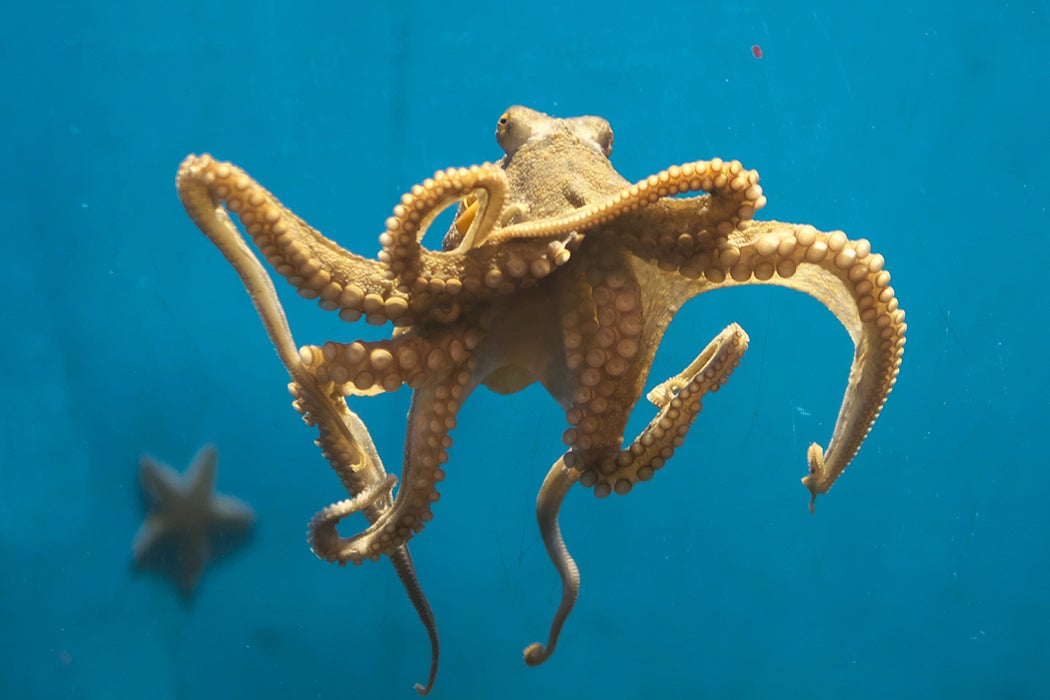This is something new: expose an octopus to the party drug MDMA (ecstasy) and it acts a lot like, well, a human exposed to the party drug MDMA. Yes, the drug causes the normally reclusive mollusks to seek out the touch of another octopus. For two completely different organisms to have such a similar reaction is unprecedented, and may open entirely new avenues of brain research. But how on earth did someone decide to test MDMA on an octopus? Regardless of the motives behind this particular study, there is a long history of studying octopus and squid brains for clues about humans.
Zoologist J.B. Messenger reviews decades of work on octopus brain research in Science Progress. Octopuses are known to be highly intelligent, enabled by the largest brains of any invertebrate. They have well-developed structures controlling different physiological processes and their brains are organized into discrete lobes. In short, their brains have some similarity to vertebrate brains. Plus they are easy to obtain.
Octopuses have impressive learning abilities and an excellent memory. They store visual memories and tactile memories separately, in different sets of paired lobes. Unfortunately for researchers interested in human brains, however, it turns out that the octopus memory system is not a good model for studying human memory because it is just too complicated. According to Messenger, it’s just too hard to isolate particular processes.
Locomotion and movement are further interesting areas. Cephalopods have much of their bodies under conscious control, including their numerous limbs, their eyes, even the texture of their skin. Limbs, skin, and the muscular mantle (also used to move) are each controlled by discrete sets of lobes. The visual center of the brain serves as sort of the master controller for all of these different parts. Parts of the visual system are roughly analogous to the vertebrate cerebellum, which coordinates muscular function. Once again, despite the clear levels of brain organization, the shear complexity of locomotion control makes it difficult to draw cross-species conclusions.
Get Our Newsletter
The biggest breakthrough to date has actually come from the octopus’s fellow cephalopod, the squid. Examining the squid nervous system in the late 1920s, biologist J.Z. Young discovered that squid have huge axons (the elongated portion of a nerve cell that conducts a nerve impulse towards another cell). The discovery of these enormous axons enabled a whole new method to study the nervous system. Using squid axons, Alan Hodgkin and Andrew Huxley discovered the mechanism behind how nerves transmit signals. In 1963 they shared a Nobel Prize for their work.
The MDMA study builds on all this past work. Even though the differences between cephalopod and human brain organization are profound, the MDMA study suggests that we still have more in common than one might think.







